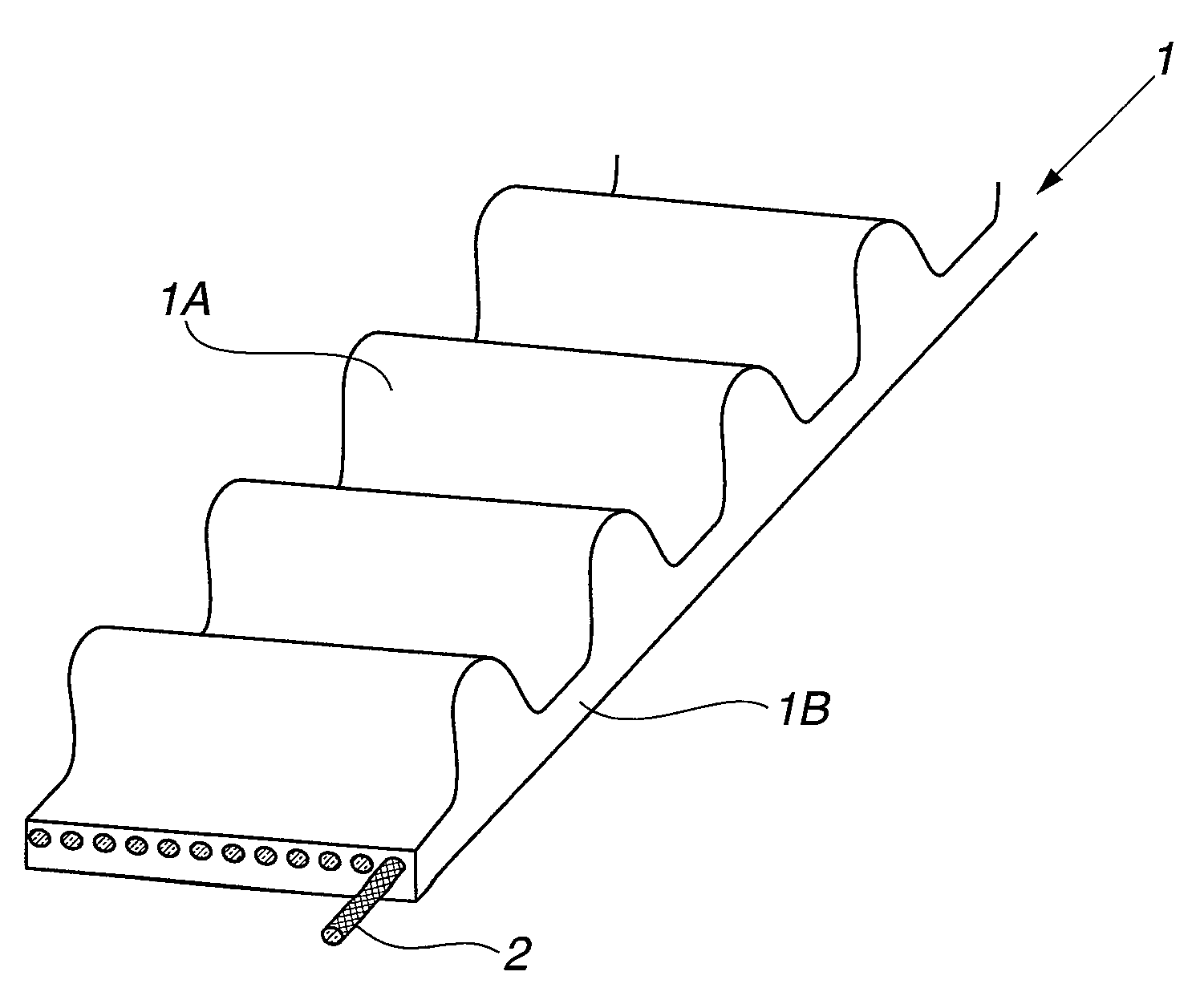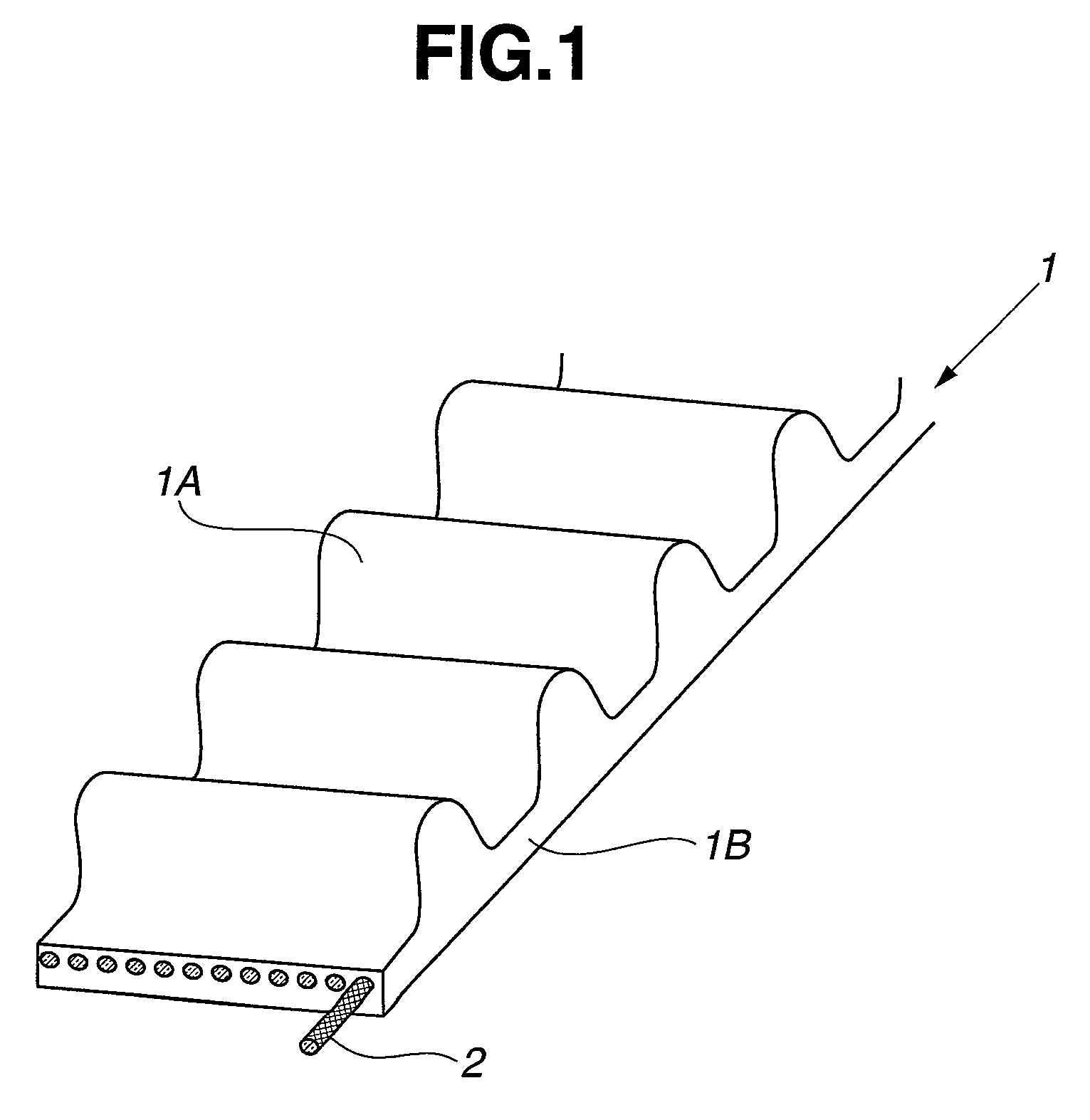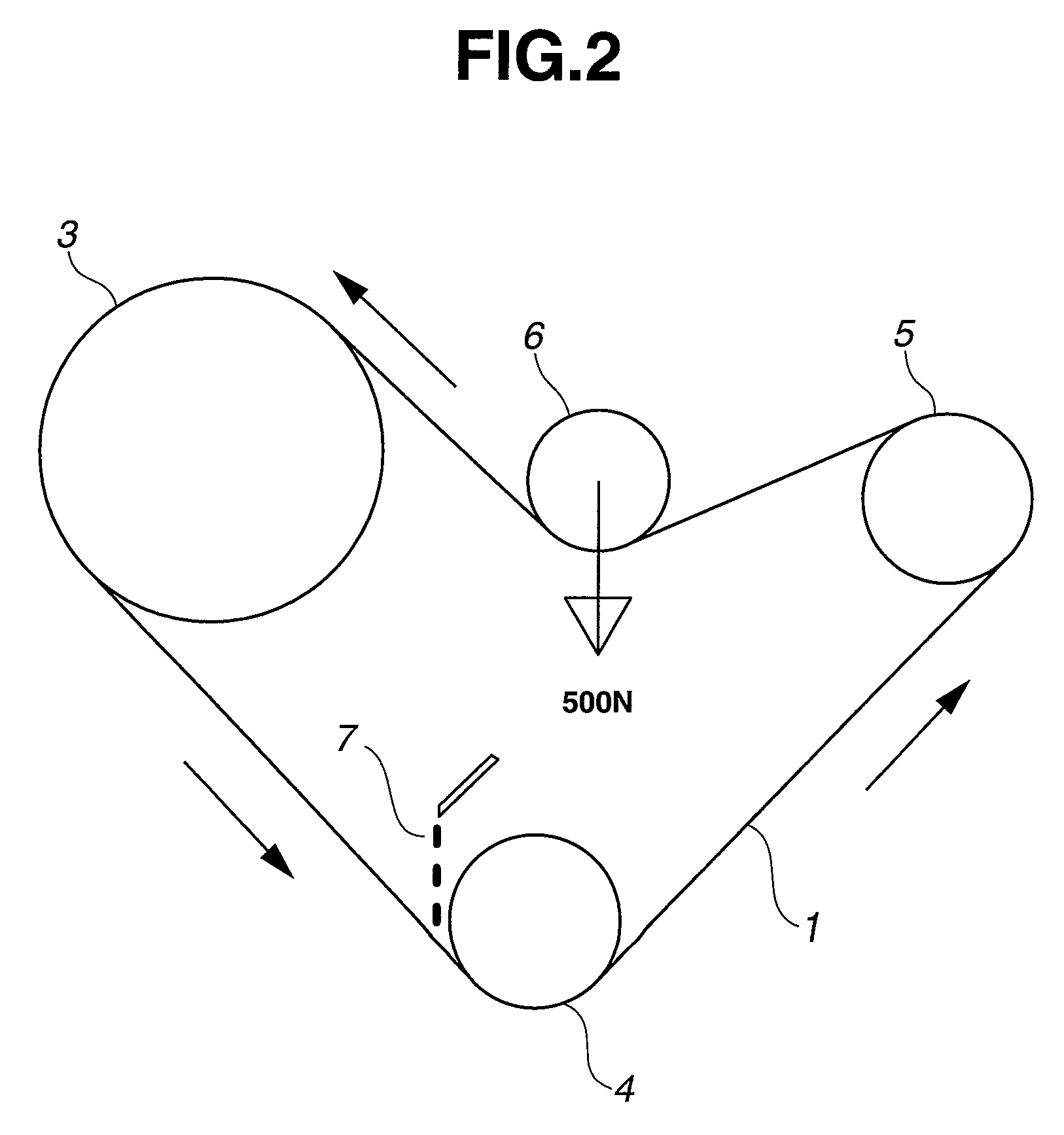Coating liquid for covering glass fiber and rubber-reinforcing glass fiber using same
a technology of coating liquid and glass fiber, applied in the field of glass fiber coating liquid, can solve the problem of not maintaining initial tensile strength without changes, and achieve the effect of enhancing adhesion
- Summary
- Abstract
- Description
- Claims
- Application Information
AI Technical Summary
Benefits of technology
Problems solved by technology
Method used
Image
Examples
reference example 1
[0096](Preparation of Glass-Fiber Coating Liquid)
[0097]The synthesis of the monohydroxybenzene-formaldehyde resin (A) will be first explained below. A three-neck separable flask having a reflux condenser, a temperature gauge and a stirrer was charged with 100 parts by mass of monohydroxybenzene (D), 157 parts by mass of 37 mass % aqueous formaldehyde (E) (mole ratio: E / D=1.8) and 5 parts by mass of 10 mass % aqueous sodium hydroxide, followed by stirring these ingredients for 3 hours under heating at 80° C. After the stirring was stopped, the resultant mixture was cooled, blended with 370 parts by mass of 1 mass % aqueous sodium hydroxide and subjected to polymerization to yield the monohydroxybenzene-formaldehyde resin (A).
[0098]Aqueous ammonia and water were added into the yielded monohydroxybenzene-formaldehyde resin (A) together with commercially available emulsions of the vinylpyridine-styrene-butadiene copolymer (B) and the chlorosulfonated polyethylene (C), thereby obtaining ...
reference example 2
[0108]The glass-fiber coating liquid was prepared in the same manner as in Reference Example 1, except that the glass-fiber coating liquid contained 83 parts by mass of the monohydroxybenzene-formaldehyde resin (A) and 451 parts by mass of the emulsion of the vinylpyridine-styrene-butadiene copolymer (B) available under the trade name of Pyratex (vinylpyridine-styrene-butadiene mass ratio: 15:15:70, solid content: 41.0 mass %) from Nippon A&L Inc. The contents of the monohydroxybenzene-formaldehyde resin (A), the vinylpyridine-styrene-butadiene copolymer (B) and the chlorosulfonated polyethylene (C) in the glass-fiber coating liquid were A / (A+B+C)=7.2%, B / (A+B+C)=64.2% and C / (A+B+C)=28.6%, respectively, assuming the total mass of the monohydroxybenzene-formaldehyde resin (A), the vinylpyridine-styrene-butadiene copolymer (B) and the chlorosulfonated polyethylene (C) as 100%.
[0109]The same secondary glass-fiber coating liquid as that of Reference Example 1 was prepared.
[0110]The rubb...
reference example 3
[0111]The glass-fiber coating liquid was prepared in the same manner as in Reference Example 1, except that the glass-fiber coating liquid contained 124 parts by mass of the monohydroxybenzene-formaldehyde resin (A) and 426 parts by mass of the emulsion of the vinylpyridine-styrene-butadiene copolymer (B) available under the trade name of Pyratex (vinylpyridine-styrene-butadiene mass ratio: 15:15:70, solid content: 41.0 mass %) from Nippon A&L Inc. The contents of the monohydroxybenzene-formaldehyde resin (A), the vinylpyridine-styrene-butadiene copolymer (B) and the chlorosulfonated polyethylene (C) in the glass-fiber coating liquid were A / (A+B+C)=10.8%, B / (A+B+C)=60.6% and C / (A+B+C)=28.6%, respectively, assuming the total mass of the monohydroxybenzene-formaldehyde resin (A), the vinylpyridine-styrene-butadiene copolymer (B) and the chlorosulfonated polyethylene (C) as 100%.
[0112]The same secondary glass-fiber coating liquid as that of Reference Example 1 was prepared.
[0113]The ru...
PUM
| Property | Measurement | Unit |
|---|---|---|
| mole ratio | aaaaa | aaaaa |
| mole ratio | aaaaa | aaaaa |
| mole ratio | aaaaa | aaaaa |
Abstract
Description
Claims
Application Information
 Login to view more
Login to view more - R&D Engineer
- R&D Manager
- IP Professional
- Industry Leading Data Capabilities
- Powerful AI technology
- Patent DNA Extraction
Browse by: Latest US Patents, China's latest patents, Technical Efficacy Thesaurus, Application Domain, Technology Topic.
© 2024 PatSnap. All rights reserved.Legal|Privacy policy|Modern Slavery Act Transparency Statement|Sitemap



